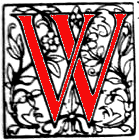
The only constant in Ralston’s wide-ranging career was his work as a photographer in the family business. Following a period of uncertainty when the concern was first set up by Ralston senior in the mid-1850s, the studio became the economic bed-rock from which he projected his other activities as a graphic artist and designer of bindings; when his artistic work came to an end, he simply returned to his earlier job as a photographer. In an age when illustrators were subject to the vagaries of supply and demand and had no financial security, Ralston had an enviable stability.
As early as the 1860s William Ralston and Sons was a highly successfully venture and ultimately included several branches. By 1867 the main premises was at 73 Sauchiehall Street, and in 1899 it was number 259 (‘up the stairs’), at the heart of Glasgow’s principal thoroughfare and in proximity to a number of elite traders. Here the Ralstons produced photographs of all sorts, some hundreds of which are preserved in the Mitchell Library, Glasgow. The mainspring of the company’s success was its versatility, a focus that must reflect Ralston’s capacity to work in a variety of styles and genres.
In the sixties and seventies the primary work was the production of cartes-de-visite, the pocket-sized photographs, usually albumen prints, that were used as calling cards and became extremely popular. The Ralstons’ images exemplify the conventions of the genre: the sitters appear in their best apparel and the fittings include a comfortable chair, drapes and a window. Limited by the slowness of the shutter in the period before 1870, the effect is characteristically static, as it is in the portraits of two Glaswegian citizens, Helen Kirk and John McCall. The company also produced ‘fine art’ or ‘cabinet portraits’ which were designed for display behind glass or on a sideboard. Portraits of children, pets, prize cats and dogs and other miscellanea completed the portfolio. Though his mainstay, the artist found humour in these images, most notably in an illustration in Tippoo, in which the troublesome tiger wrecks the photographer’s set: an absurdist comment on the travails, as W. C. Fields once infamously remarked, of working with children and animals.

William Ralston as illustrator and cartoonist. Click on image to enlarge it.
Of course, this range was matched by the Ralstons’ competitors in a crowded field, and the company offered several services that were probably fairly unusual. One was the painting service, turning black and white cartes and portraits into oils and watercolours (Hamilton Advertiser, 1867, p.4). Peter Ralston may have painted some of these, though it is probable that many of them came from the hand of his son. In the nineties this line in quirky products was extended by Ralston’s production of comic postcards; views of Glasgow and local beauty spots were sold in parallel.
By 1906 the Ralston brand included domestic photographs, novelties and cheap cards. A final strand was added by their role as ‘industrial photographers’ engaged in recording building developments, new machinery and other technological ventures. The company continued until 1911 and only closed when Ralston died.
Works
Related material
- William Ralston: Life and Career
- Ralston as an Illustrator: Working for Punch, 1871–86
- Ralston, The Graphic, and Books at the End of the Century
- William Ralston as a Book Cover Designer
Primary sources: archive and manuscript material
Ralston, William, MSS. Letters to John Reid. Edinburgh University Library.
Ralston, William. Photographs by Ralston & Sons, The Mitchell Library, Glasgow, and The National Portrait Gallery, London.
Last modified 9 October 2016